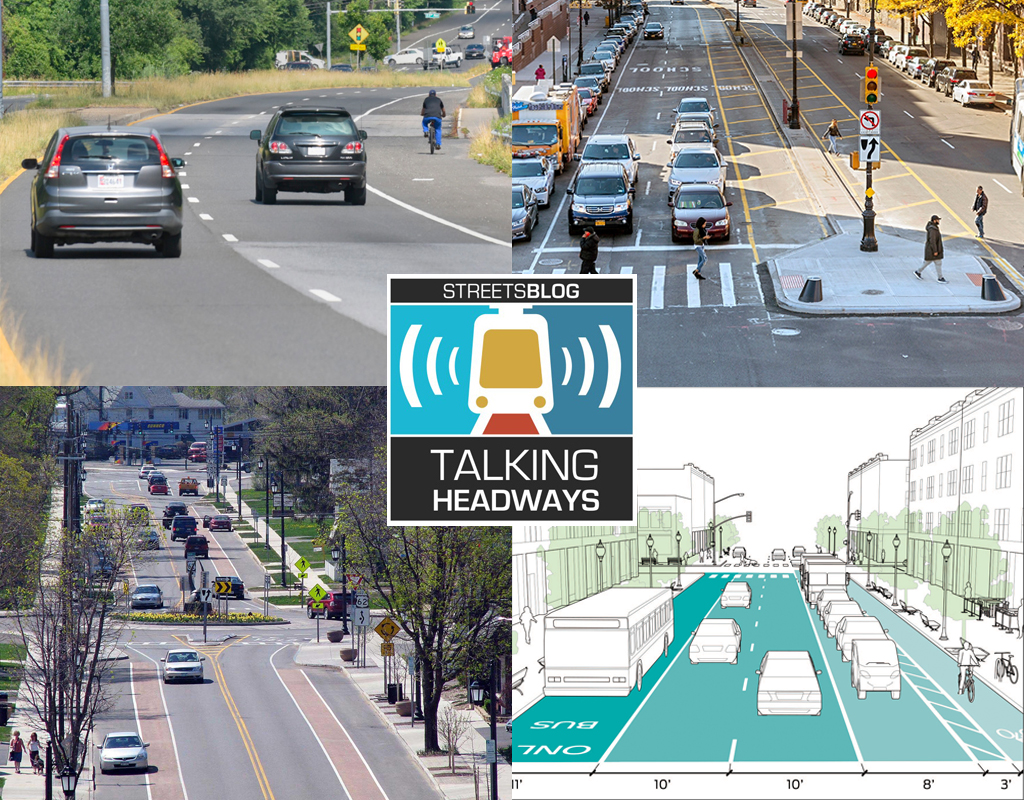This week, we’re joined by Dr. Shima Hamidi, an assistant professor at Johns Hopkins University, to talk about the report: A National Investigation of the Impacts of Lane Width on Traffic Safety, which shows that narrowing street widths can create more space for bikes and peds — and are just safer.
If you want to read an edited transcript, we've pasted it below the player. For a full unedited transcript, click here.
Excerpt:
Jeff Wood: The report points out that built environment factors make a difference: street trees, building setbacks have an impact. What made you wanna kind of think about those in addition to lane widths as something that might impact how fast or slow people drove?
Shima Hamidi: Think about the two scenarios: One is you are driving on a rural road with nothing happening on any side of the street. There are no trees, no objects, no sidewalk, no bike lane. Now compare that to a similar street with the same speed limit, but in downtown area. On the first case, a driver is going to go fast because he has this sense of safety or that nothing is going to happen. But on the downtown street, all of the design factors give drivers the sense of busy-ness and complexity — and make them to drive more cautiously.
So we looked at tree coverage, pedestrian furniture, soft sidewalks, number of lanes, street setback, traffic-calming devices in the street — and we even had a variable that would measure the sense of motion in the street. Like how much you have other users of streets like pedestrian and cyclists on the same street sharing space with cars, which again make drivers drive slower and more carefully.
Jeff Wood: So then what did you find when you put all these things together?
Shima Hamidi: We found that, first, the context matters. There's a huge difference between the rural street with no complexity versus all of these 21 design factors that we control for. And when you control for all of these factors, then you see that narrower lanes don't increase the number of crashes. In many cases actually it's quite the opposite. You see that wider lanes are more dangerous, experience higher number of crashes than their narrower counterparts.
I'm talking about 12-foot lanes versus nine- or 10-foot lanes. We found that 12-foot lanes have actually significantly higher number of crashes than nine- or 10-foot lanes, which is counter to the street design practice and most policies and lane width standards that you see currently happening in the US.
Jeff Wood: And this is non-intersection collisions as well, right? A lot of folks will look at the collisions and think they happened at intersections, but you include the non-intersection crashes, correct?
Shima Hamidi: That's correct. About 40 percent of crashes happen in the intersection and we did not include them because lane width really doesn't have anything to do with intersection. And so there are a bunch of other factors that might affect crashes at the intersections, but you know really what the lane width or number of lanes could impact how many non-intersection crashes you see across the street. And that was the outcome variables in this study
Jeff Wood: And the speeds had something to do with it, too.
Shima Hamidi: Absolutely. So we also broke down the street samples that we had in our study, which is more than 1,100 streets from seven different cities to different speed classes. And the most interesting findings we had were for the street with the speed class of 20 to 25 mile per hour and 30 to 35 miles per hour for 20 to 25, we found that different lane width values have absolutely no difference in terms of number of crashes. It doesn't matter if it's a nine-, 10-, 11-or 12-foot lane, because at 20 to 25 miles per hour the drivers are slow enough that lane-width differences might not impact the likelihood of crash happening.
But when you go to 30 to 35 miles per hour, it's absolutely different. You will see that 12-foot lanes and 11-foot lanes have significantly higher number of crashes than 10- or nine-foot lanes. And that's why we think that's the speed class where you begin to see the wider lanes give drivers the sense of safety and likelihood of higher speeds that might lead to higher numbers of crashes.






